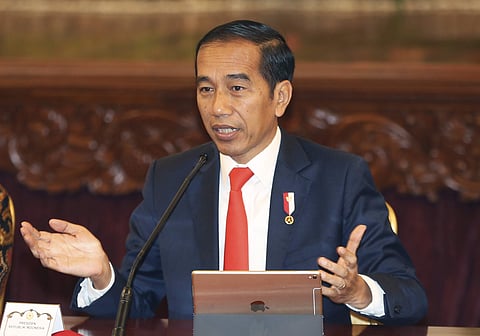

On April 25, a top leader of the Indonesian intelligence forces fighting the rebel groups in the region of Papua was gunned down in what is being called his “final ambush” against the forces of the Free Papua Movement or Organisasi Papua Merdeka (OPM). Through the first few weeks of April, the fighting between the intelligence forces and the Papuan rebels had reached a critical point that led to the killing of General Danny Karya, popularly known as Gusti. One particular group under this broader umbrella of the Organisasi Papua Merdeka, called the West Papua National Liberation Army—the military wing of the OPM—has claimed responsibility for the killing of General Karya. The Central government led by President Joko Widodo categorically stated that the killing would not go unpunished and that all measures to bring the culprits to book would be exercised in the aftermath of this incident.
This brings to light the troubled status that Papua continues to hold within the Indonesian state. A diverse country, Indonesia has had its fair share of ethnic issues that have challenged the state’s integrity. Conflicts in the country have run along two broad parallels, both vertical and horizontal conflicts. Vertical conflicts have largely been directed towards separatism; horizontal conflicts have been along ethnic, racial, religious and sectarian lines, without taking separatist overtones. In the case of Papua, which is the easternmost province of the country, there is a link between both the ethnic and separatist factors, which are combined here. Papuan ethnicity is predominantly Melanesian and even among the various tribes, there is conflict and competition for the region’s rich resources. Historically, the Dutch controlled the western parts of the island while other colonial powers controlled the eastern regions, leading to the division of the island into the independent state of Papua New Guinea and West Papua, which is the easternmost province of Indonesia. While Papua was part of the Dutch colonial possessions in Indonesia, it became a contested territory after the Dutch refused to relinquish their hold over the province. The Dutch were keen to retain certain areas such as the Malukus and Papua for both social and economic reasons—these regions were predominantly Christian and also very rich in natural resources.
The contest between the newly formed Indonesian state and the Netherlands continued over Papua, with Indonesia claiming all the erstwhile territories under Dutch control. In 1962, Papua was placed under the United Nations Temporary Executive Authority, which in the following year handed control over the region to Indonesia. Papua was formally incorporated into the Indonesian state in 1969 following a plebiscite in the region, which was known as the Act of Free Choice in which 1,025 local chiefs of the region chose to integrate with Indonesia, giving rise to the separatist movement led by the Organisasi Papua Merdeka that was formed as early as 1965. But this grouping remained loosely formed and during the years of the Suharto regime, the state kept a tight hold through the military, and the OPM remained inchoate.
Following the transition to democracy, the Indonesian state has implemented a series of laws that have allowed for further decentralisation in an attempt to address regions ridden with conflict. While decentralisation began from 1999 onwards, it was the implementation of special autonomy laws in 2001 that assisted in the transition of conflict regions such as Aceh and Papua. In the Aceh context, it led to the implementation of a special law for the region that addressed the separatist conflict, leading to the Acehnese separatist group Gerakan Aceh Merdeka (GAM) becoming part of the electoral process and forming the regional government in 2006; in the case of Papua, it was more complicated. The Central government divided the region into three different areas to quell the movement, thereby creating vested interests in the competition for the region’s resources.
One of the main drivers of the conflict in Papua is the region’s rich resources. The recent killing of General Karya took place near the Grasberg copper and gold mines. While they are the tenth largest globally for copper reserves, the gold mines are considered to have the largest reserves in the world. The Grasberg mines are owned by the Freeport McMoran company and its Indonesian group the PT Freeport, the largest corporate taxpayers within Indonesia. And the region’s instability is also clearly linked to the revenues that the resources from here accrue annually, leading to the formation of a clear nexus in the conflict between the locals and the central authority, as well as among the locals themselves for control over the area’s economic assets. In recent times, China was being viewed as a potential investor in the construction of a copper smelter in the Halmahera region in eastern Indonesia, which was slated to cost about $2.5 billion. But this deal collapsed recently and there seems to be some view by analysts that the intra-tribal tensions have also been exacerbated by external companies seeking to gain a foothold in the resource-rich province, where tribal groups are competing with one another, while playing external actors against each other too. The increasing violence in the last month and the recent killing are likely to bring a more strident approach to the problem at hand, pushing issues of human rights to the edge. The problem looks intractable and Jakarta will need to address this sensitively.
Shankari Sundararaman
Professor at School of International Studies, JNU
(shankari@mail.jnu.ac.in)